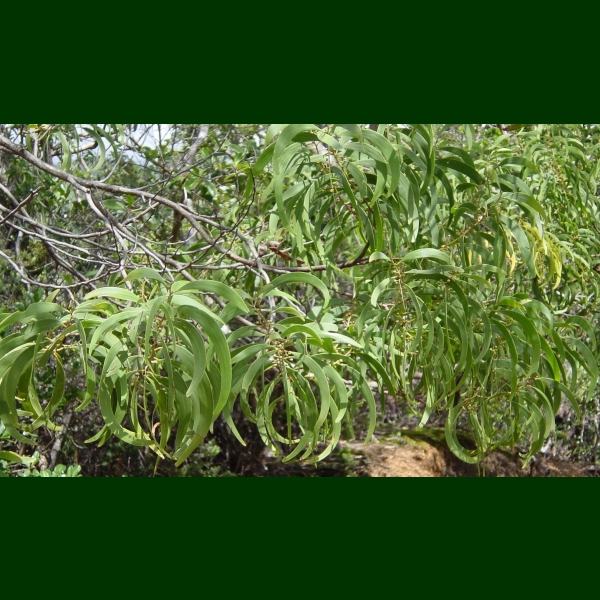 Hawaiian Name(s): koa
Hawaiian Name(s): koaScientific Name: Acacia koa
Vernacular Name: none
Family: Fabaceae
Status: endemic
Authority: A.Gray
Description: Large trees, to 25 m tall.
Habitat Common in dry to wet forests 60-2060 m on most main islands (Wagner et al. 1990:641–642).
Medicines: The young leaves used to induce sleep for cramps or fevers; ashes of burnt leaves smeared on lesions for ‘ea (thrush) and pa‘ao‘ao in children (Chun 1994:156).
Non Medicinal Uses: Noted as "one of the most common trees on all islands...equally useful for fuel and construction"; trunks (in former times) used for great war canoes (Hillebrand 1888:113); bark for dye and tanning, all types of canoes, paddles (Degener 1930:177-8; Malo 1951:20); branches used in rituals (Malo 1951:174); bark for dye, wood for surfboards (Krauss 1993:65, 96); Abbott (1992:68) says no record of koa for traditional house building. Wood traditionally used as bearing sticks and kahili handles (Lamb 1981:47); now for furniture and bowls, but calabashes for food (‘umeke) were not traditionally made from koa as a bad taste was imparted. Wood also used in making weapons (Abbott 1992:110). Sometimes placed on hula altars (Pukui 1942). In the Ethnology Collection at Bishop Museum there is a contemporary example of koa used in part of a large pump drill.
Specific gravity of wood: 0.55
Famous Locations:
Mele:
`Ōlelo Noeau: [I] E ola koa. Live like a koa tree. Live a long time, like a koa tree in the forest. [II] Ha‘alele i Puna na hoaloha e. Left in Puna are the friends. Said of one who has deserted his friends. Originally said of Hi‘iaka when she left Puna. [III] Ka ulu koa i kai o Oneawa. The koa grove down at Oneawa. From the legend of Hi‘iaka. Canoes are sometimes referred to as the koa grove at the sea, for canoes in ancient times were made of koa. [IV] Lihu‘e ho‘a wahie lala koa. Lihu‘e lights fires with koa branches. Lihu‘e, O‘ahu, once had a grove of koa trees whose brances were used for firewood.
Dye Color and Parts: Red (bark)
Kino lau:
Location on Bishop Museum Kalihi Campus:
Propagation Information: Intermediate. Presoak seeds; roots emerge within a few days; higher elevations result in large, fine, straight trunks, fewer pests & disease; able to grow at sea level; monitor for insects (Bornhorst 1996:59–60; Culliney and Koebele 1999:77–81; Nagata 1992).
Hawaiian Native Plant Propagation Database.
Native Plants Hawaii.
Seed: Seed length approximately 8.7 mm. Photograph: H.Lennstrom.
Click for image
Microscopy
Cross Section: Field of view: 2.6 mm x 1.6 mm. Photograph: H.Lennstrom.
Click for image
Radial Section: Field of view: 2.6 mm x 1.6 mm. Photograph: H.Lennstrom.
Click for image
Tangential Section: Field of view: 2.6 mm x 1.6 mm. Photograph: H.Lennstrom.
Click for image
